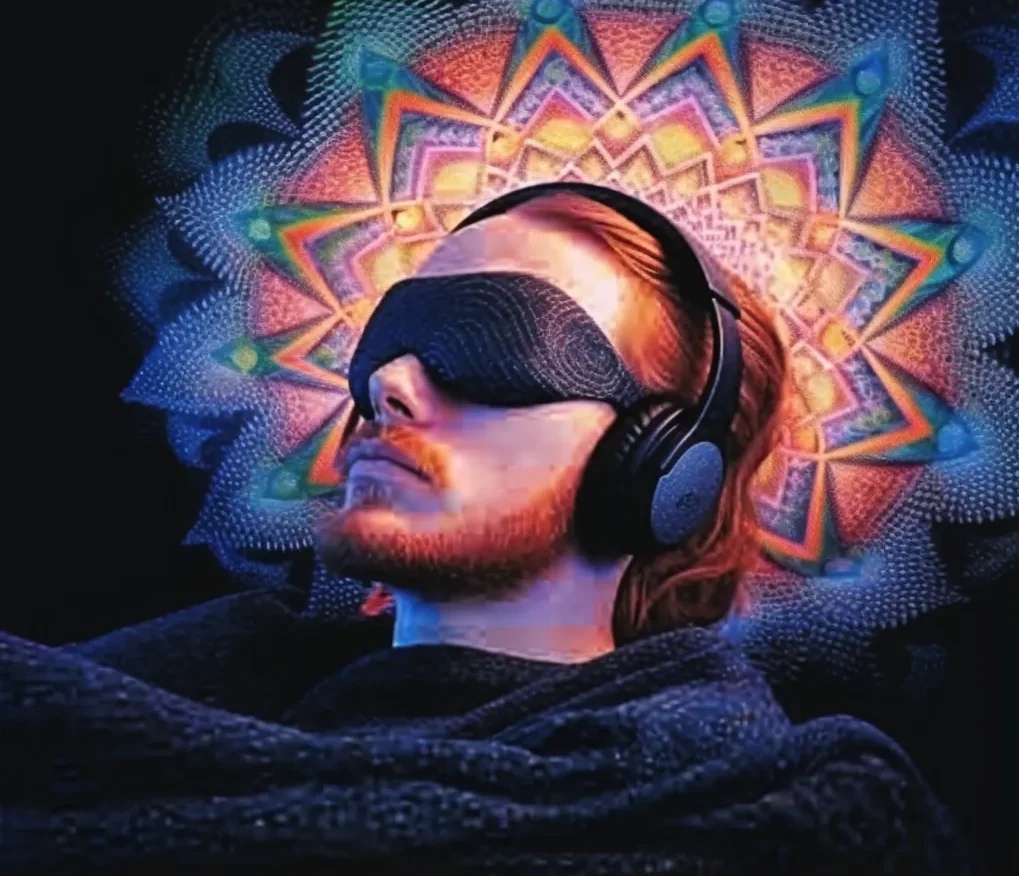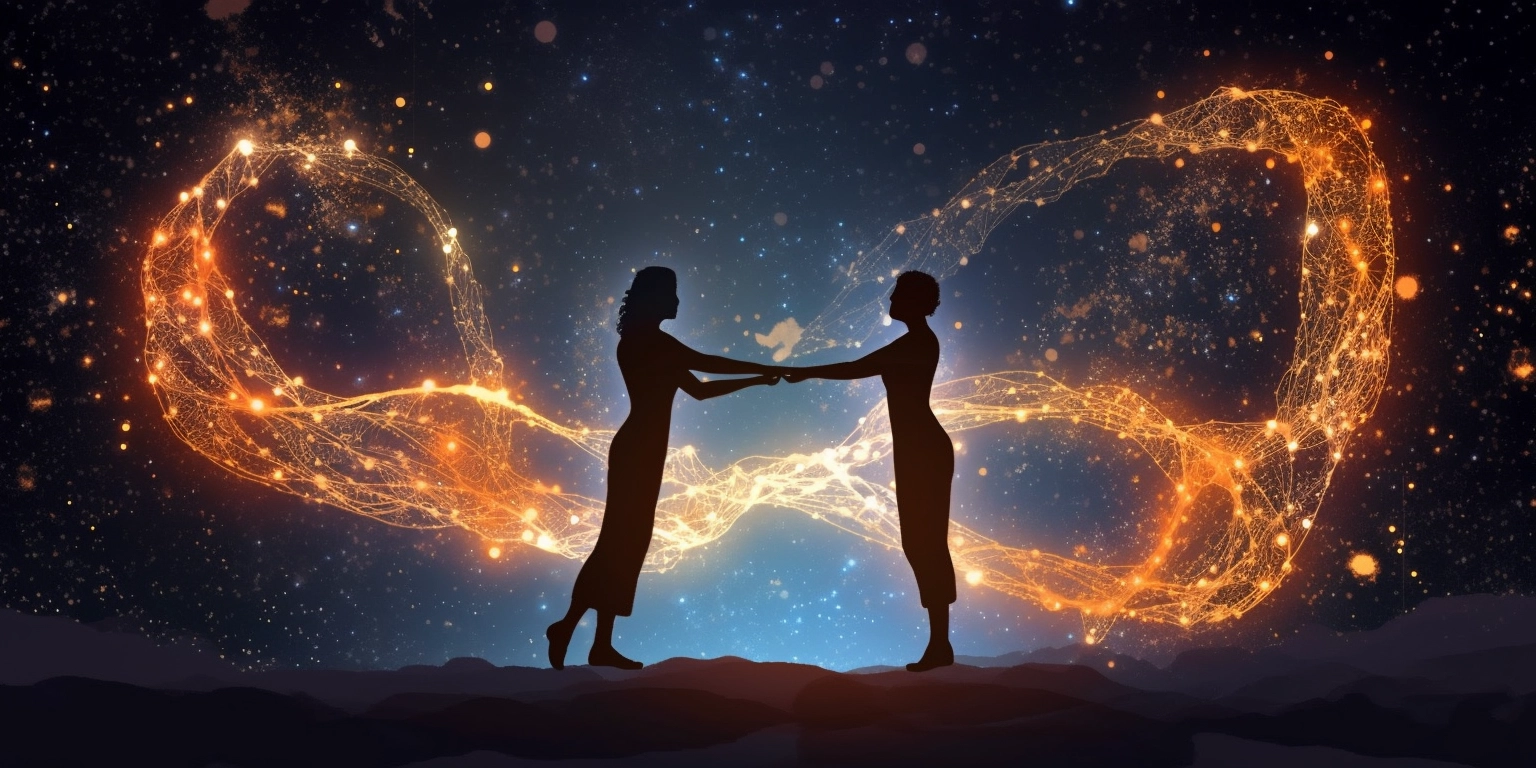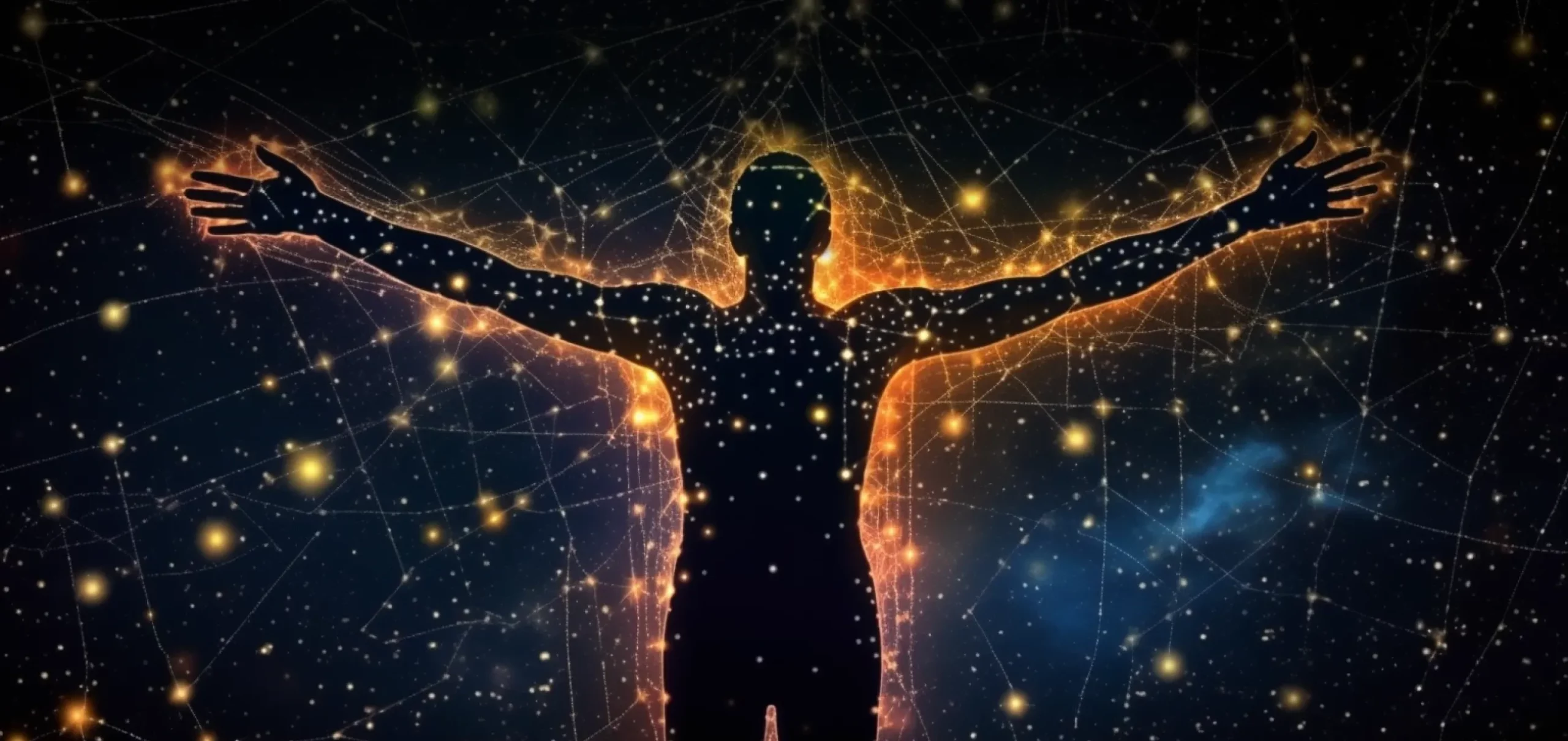In the past few years, psychedelics have gone from maligned drugs associated with the free love and anti-war movements of the 1960s and 1970s, to being the hottest thing in the search for new mental health treatments. New research is on the rise, with major news outlets like CNN, the BBC, and the New York Times frequently touting the healing potential of psychedelic medicine.
However, as businesses rush to strike gold to find new, patentable drugs, they often try to remove one of the most unique aspects of psychedelics: the hallucinogenic properties that bring on powerful and possibly crucial “mystical experiences.” Compounds like 2-Bromo-LSD (originally developed by Albert Hofmann, before being shelved and now being explored by Merck and some others for depression and cluster headaches) activate similar pathways in the brain as drugs like psilocybin do, such as the 5-HT2A receptor, without triggering a psychedelic trip. This means some new compounds will lack certain valuable aspects of traditional psychedelics, like perceptual changes, the dissolution of the ego, and, importantly, the mystical experience.
Companies like Delix Therapeutics, BetterLife Pharma Inc., and Psilera Bioscience have all jumped on the not-so-psychedelic bandwagon. Many are touting the development and testing of new, so-called “psychedelic” drugs that are missing these quintessentially psychedelic properties.
Of course, this isn’t necessarily “bad,” as some individuals with certain mental health conditions, like schizophrenia, are advised not to use traditional psychedelics. Others may not be interested in breaking down and reconstructing their mental landscape. These new, tamer, psychedelic-derived drugs could potentially provide those individuals with an alternative that still gives some relief from conditions like depression and anxiety and increase neuroplasticity. But what about people that seem to benefit most from the mind and heart-opening effects of a full-on psychedelic trip?(1)
Keep Up with Uncensored Psychedelic Trends
Join our newsletter at Psychedelics Uncensored.
We respect and protect your privacy. By subscribing your info will be subject to our privacy policy . Unsubscribe easily at any time
What are Psychedelics and Psychedelic Medicine?
Psychedelics are a class of serotonergic, hallucinogenic drugs that typically include psilocybin (aka magic mushrooms), LSD, DMT, ayahuasca, and mescaline (the active drug found in peyote and San Pedro cactus). These five compounds make up the “classical” family of psychedelics. Other non-classic psychedelics include the “love drug,” MDMA, 5-MEO-DMT, and ketamine (a dissociative and hallucinogenic drug).(2)

When speaking about psychedelic medicine here, we’re talking about the combination of psychedelic drugs (i.e., magic mushrooms or LSD) combined with some sort of traditional psychotherapy. Often this will involve talk therapy, either before or after receiving the psychedelic, as well as some sort of integration work to help you find useful ways to incorporate the lessons learned from the psychedelic experience. Typically, this means discussing what you felt, saw, or learned during the trip.(3
What is a Mystical Experience?
A mystical experience is something that can occur when you’ve taken a strong dose of some sort of psychedelic (although they can be spurred by other things like yoga, meditation, prayer, or other forms of religious and spiritual ecstasy). However, in this case, we are only touching on drug-induced mystical experiences..(4, 5)

You may feel various emotions and psychological states when a mystical event occurs. Some of these include ego death (aka ego dissolution), a sort of boundlessness where you lose the sense of being a single individual and become part of the greater whole. One may feel they have deep connectedness with the universe, the wider world, humanity, or just our personal circle of friends and family.(4, 5)
In essence, the mystical experience is a journey into the deeper depths of self.
The mystical experience is frequently associated with the hallucinogenic effects of psychedelics. This implies that if that particular aspect of the psychedelic experience were to be eliminated, then there is a strong chance that the efficacy of psychedelic medicine may also be impacted. In some cases, things like LSD may even help us understand death.(4, 5)
Why Mystical Experiences are Integral to Psychedelic Medicine
The psychedelic drugs LSD, psilocybin, DMT, mescaline, and ayahuasca are the most commonly associated with mystical and spiritual experiences. These events seem to play an important part in the therapeutic potential of psychedelic medicine. This appears to be due, in part, to the unique combination of oceanic boundlessness (feeling as if you’ve shed your individuality and become part of something vastly greater than yourself), ego dissolution (explored in depth in our article Ego Death, Deciphering the Loss of “Self”), increases in neural plasticity (the development of new neural connections in the brain), and empathy.(6, 7)
Keep Up with Psychedelic Trends
Get uncensored psychedelic news, events, and updates. Join Psychedelics Uncensored!
We respect and protect your privacy. By subscribing your info will be subject to our privacy policy . Unsubscribe easily at any time
All of these are quintessential elements of a psychedelic trip, and have been closely linked to both symptom reduction and improved quality of life for individuals with certain conditions. For instance, the mystical experience may benefit someone with post-traumatic stress disorder (PTSD) by facilitating the deconstruction of mental blocks and barriers that have been interfering with therapy. These benefits could also be compounded by enhanced neural plasticity, enabling an individual to view their trauma in new, more constructive ways.(6, 7)

In essence, the mystical experience is a journey into the deeper depths of self. This psychedelic-induced journey can allow one to feel a profound sense of unity and interconnectedness with those around them. This may allow a person to connect with therapists more thoroughly and completely.(8)
As mentioned, another important aspect of the mystical experience is ego death, or ego dissolution. Ego death is the temporary dissolution of your sense of self or your “subjective self-identity.” Some researchers believe that this can act as a sort of internal reset. Allowing participants to drastically shift their perspectives, which in turn, may allow them to make new self-discoveries and insights which they can then talk about with their therapists.(8, 9)
Interestingly, the mystical experience itself may only be one small piece of the puzzle. In a study titled Acceptance and Commitment Therapy: Model, Processes and Outcomes, researchers found that the interpretation of the event may be equally as important. This, when paired with integration, seems to have a dramatic impact on patient outcomes. The study also indicates that the insights gained from a mystical experience may help reinforce psychological flexibility and neural plasticity. This newfound flexibility could act as a catalyst for long-term, positive outcomes and could help patients realize significant improvements in conditions such as depression, anxiety, PTSD, and substance use disorders. This simply means that your ability to understand, process, and integrate a mystical experience may help you adapt to challenging situations, or past events.(10, 11, 12, 13)
Why More Research is Needed to Fully Understand Mystical Experiences
While some researchers and organizations may be trying to excise the mystical aspects of psychedelic medicine, it can be argued that it needs to not only be preserved, but thoroughly researched and understood. The exploration of psychedelic-induced mysticism stretches all the way back to the 1960s, when researchers like Timothy Leary and Walter Pahnke were studying the connection between psychedelics and the mysterious. Studies from that era, like the famous Good Friday Experiment, which examined the entheogenic effects of psilocybin, showed strong links between psychedelics and mystical or divine events.(14)

Similar research today continues to highlight the importance of the mystical and spiritual elements of a psychedelic experience. Anecdotally, some soldiers and sailors have even started using things like MDMA to self-medicate in an attempt to deal with trauma, often citing the mystical elements as a key part of what makes psychedelics effective. Understanding the connection between mystical events and mental health outcomes is critical to advancing this relatively new area of medicine. Furthermore, unlike other practices, such as meditation or breath work, psychedelics reliably engender these experiences, making the results replicable.(15, 16)
As researchers continue to uncover the intricacies of these powerful experiences, we’ll likely gain an even deeper understanding of not just psychedelic medicine but the human psyche. This could help us understand ourselves on new levels that could aid in treating some of the most debilitating mental health conditions affecting Americans and the world.
Sources

1. Hallucinogens and Schizophrenia, Mental Hospital Philadelphia, FairmountBHS.com. (n.d.). Fairmountbhs.com. https://fairmountbhs.com/patients-families/resources/hallucinogens-and-schizophrenia/
2. Nichols, D. E. (2016). Psychedelics. Pharmacological Reviews, 68(2), 264–355.https://pubmed.ncbi.nlm.nih.gov/26841800/
3. Tupper, K. W., Wood, E., Yensen, R., & Johnson, M. W. (2015). Psychedelic medicine: a re-emerging therapeutic paradigm. Canadian Medical Association Journal, 187(14), 1054–1059. https://doi.org/10.1503/cmaj.141124
4. Kangaslampi, S. (2023). Association between mystical-type experiences under psychedelics and improvements in well-being or mental health – A comprehensive review of the evidence. Journal of Psychedelic Studies. https://doi.org/10.1556/2054.2023.00243
5. Gandy, S. (2022). Predictors and potentiators of psychedelic-occasioned mystical experiences. Journal of Psychedelic Studies. https://doi.org/10.1556/2054.2022.00198
6. Barrett, F. S., Johnson, M. W., & Griffiths, R. R. (2020). Neuroticism is associated with challenging experiences with psilocybin mushrooms. Personality and Individual Differences, 155, 109716. https://pubmed.ncbi.nlm.nih.gov/28781400/
7. Carhart-Harris, R. L., & Goodwin, G. M. (2017). The therapeutic potential of psychedelic drugs: past, present, and future. Neuropsychopharmacology, 42(11), 2105–2113. https://pubmed.ncbi.nlm.nih.gov/28443617/
8. Carhart-Harris, R. L., et al. (2016). Neural correlates of the LSD experience revealed by multimodal neuroimaging. Proceedings of the National Academy of Sciences, 113(17), 4853–4858. https://pubmed.ncbi.nlm.nih.gov/27071089/
9. Griffiths, R. R., et al. (2008). Mystical-type experiences occasioned by psilocybin mediate the attribution of personal meaning and spiritual significance 14 months later. Journal of Psychopharmacology, 22(6), 621–632. https://pubmed.ncbi.nlm.nih.gov/18593735/
10. Hayes, S. C., et al. (2006). Acceptance and commitment therapy: Model, processes and outcomes. Behavior research and therapy, 44(1), 1-25. https://pubmed.ncbi.nlm.nih.gov/16300724/
11. Johnson, M. W., Richards, W. A., & Griffiths, R. R. (2008). Human hallucinogen research: guidelines for safety. Journal of Psychopharmacology, 22(6), 603–620. https://pubmed.ncbi.nlm.nih.gov/18593734/
12. Luoma, J. B., Chwyl, C., Bathje, G. J., Davis, A. K., & Lancelotta, R. (2019). A meta-analysis of placebo-controlled trials of psychedelic-assisted therapy. Journal of Contextual Behavioral Science, 15, 39-44. https://pubmed.ncbi.nlm.nih.gov/32529966/
13. Majic, T., Schmidt, T. T., & Gallinat, J. (2015). Peak experiences and the afterglow phenomenon: When and how do therapeutic effects of hallucinogens depend on psychedelic experiences? Journal of Psychopharmacology, 29(3), 241–253. https://pubmed.ncbi.nlm.nih.gov/25670401/
14. Doblin, R. (1991). Pahnke’s “Good Friday experiment”: A long-term follow-up and methodological critique. Journal of Transpersonal Psychology, 23(1), 1–28. https://psycnet.apa.org/record/1992-04711-001
15. Ross, S., Bossis, A., Guss, J., Agin-Liebes, G., Malone, T., Cohen, B., Mennenga, S. E., Belser, A., Kalliontzi, K., Babb, J., Su, Z., Corby, P., & Schmidt, B. L. (2016). Rapid and sustained symptom reduction following psilocybin treatment for anxiety and depression in patients with life-threatening cancer: a randomized controlled trial. Journal of Psychopharmacology, 30(12), 1165–1180. https://pubmed.ncbi.nlm.nih.gov/27909164/
16. Mitchell, J. M., Bogenschutz, M., Lilienstein, A., Harrison, C., Kleiman, S., Parker-Guilbert, K., Ot’alora G., M., Garas, W., Paleos, C., Gorman, I., Nicholas, C., Mithoefer, M., Carlin, S., Poulter, B., Mithoefer, A., Quevedo, S., Wells, G., Klaire, S. S., van der Kolk, B., & Tzarfaty, K. (2021). MDMA-assisted therapy for severe PTSD: a randomized, double-blind, placebo-controlled phase 3 study. Nature Medicine, 27(6), 1025–1033. https://doi.org/10.1038/s41591-021-01336-3
This material is not intended as a replacement or substitute for any legal or medical advice. Always consult a medical professional about your health needs. Psychedelics are widely illegal in the United States, and readers should always be informed about local, state, and federal regulations regarding psychedelics or other drugs.

 David Connell
David Connell